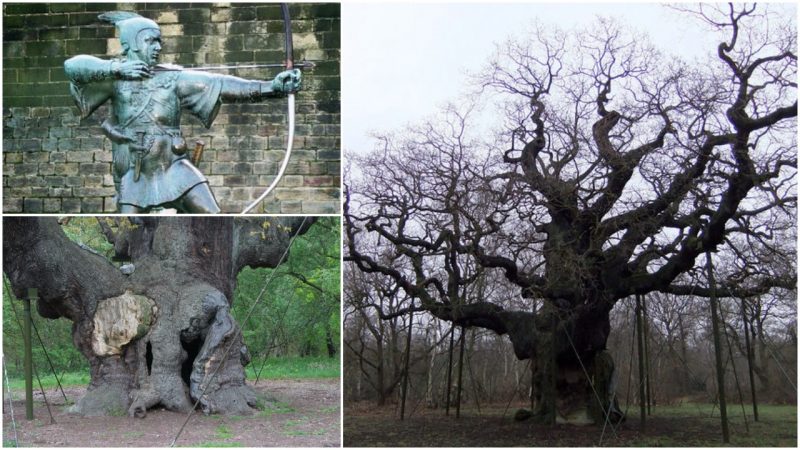Brave adventures, as well as some romance, fill the great tale of Robin Hood, and it has been narrated as such for at least seven centuries. Aside from being a significant literary figure, Robin Hood has also grown to become a star on the big screen too.
But the story about one of the most skilled archers and swordsmen English folklore has ever known, Robin Hood, would not be complete without Sherwood Forest, the heart of Robin Hood Country, which is hidden somewhere in the center of England.
Back in the 13th century, occupying an area of nearly 8,000 acres, Sherwood Forest counted among the largest of all forests in the British Isle. Its most prominent tree is the Major Oak, also recorded as one of the largest trees in the area.

As it goes in the legends, it was in the hollow trunk of the Major Oak where Robin Hood and his gang would seek shelter after conducting their trickster-like missions.

Over time, the Major Oak has grown to bear national significance, and during Victorian times it also gained protected status and became a popular tourist attraction. An earlier known name for this old oak was Cockpen Tree, as the site around it used to be used as a cockfighting venue.
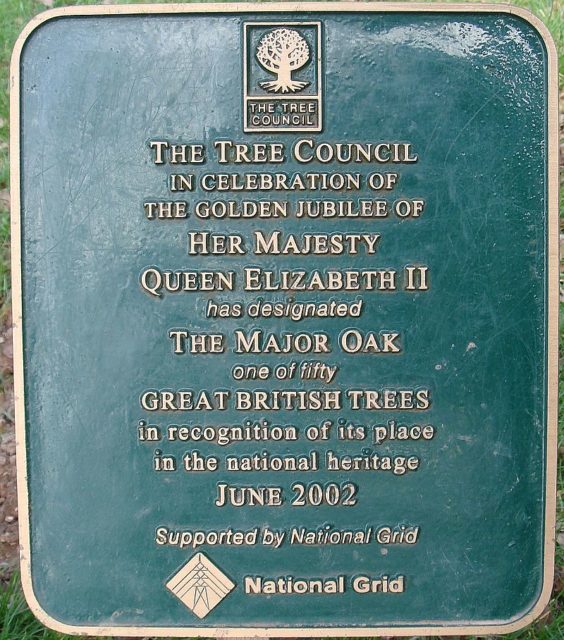
When Major Haymon Rock, a distinguished archaeologist of the 18th century, would pen his famous book about old trees around Sherwood, the tree acquired its current name–Major Oak. His description of the tree also sparked a considerable debate over the exact age of the oak, though, many accounts still suggest its age is roughly one millennium.
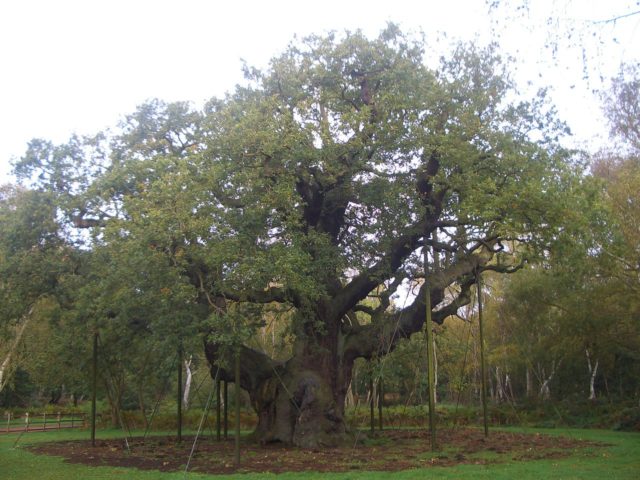
The conservation efforts to protect Major Oak and keep it alive has been ongoing probably since 1904, when metal chains were added to its massive branches. At another stage of conservation, the tree was filled in with some concrete to give it strength. Its limbs were dressed with more materials such as lead and fiberglass. Currently, there are still some metal props that aid its growth.

The popularity of this ancient oak tree has well surpassed the national borders, and reportedly, there have been people coming all the way from Australia to see the tree and even make marriage proposals beneath it. As heavy as an estimated 23 tons, the circumference of Major Oak’s knobbly trunk is astonishing, being some 33 feet, and its wild branches extend to more than 90 feet.
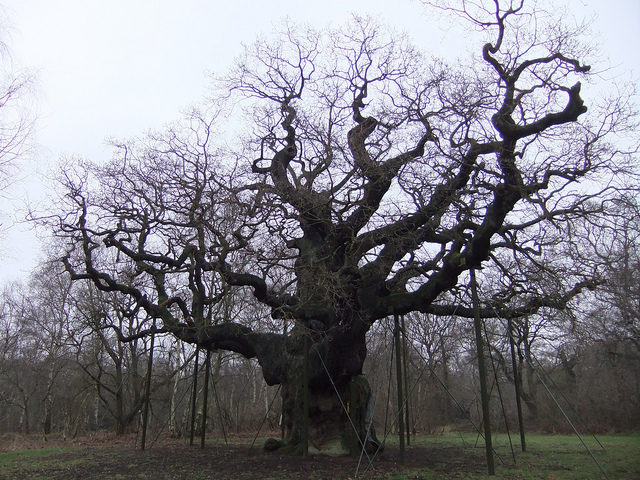
The sight of the Major Oak may not be the most charming one you’ll ever stumble upon in life, perhaps not like the Angel Oak of Johns Island in the United States. Still, the sheer size of the tree has never failed to capture the attention of any visitor.

Its hollow inside, a victim of a fungal disease, is possibly one reason why people started to believe it was the place where Robin Hood would seek shelter. But in reality, it might be that an ancestor tree to the Major Oak fulfilled such a function of providing a hideout to the favorite trickster hero on the island.
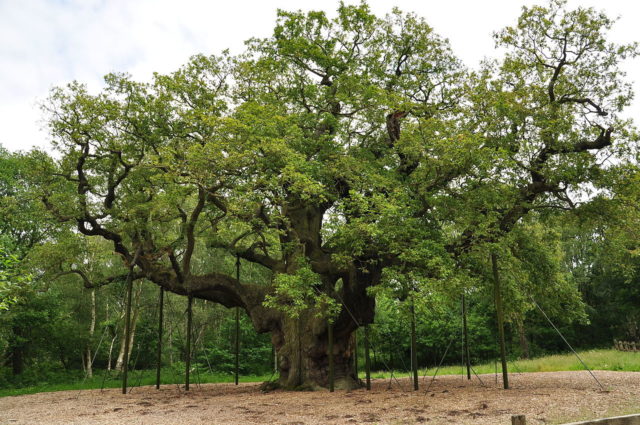
Nowadays, most of the tree’s hollow is quite difficult to reach. The old oak stands fenced off as the surrounding soil, above its roots, has undergone compaction. Tree lovers can still use a rare opportunity when festivities are conducted around the Major to pay tribute to it and possibly hug it.
Back in 2014, Major Oak was voted as England’s Tree of the Year. The year after that, it was entered into the European Tree of the Year competition, side by side with other memorable trees from the island, such as the Lonely Tree of Llanfyllin and the Lady’s Tree.
